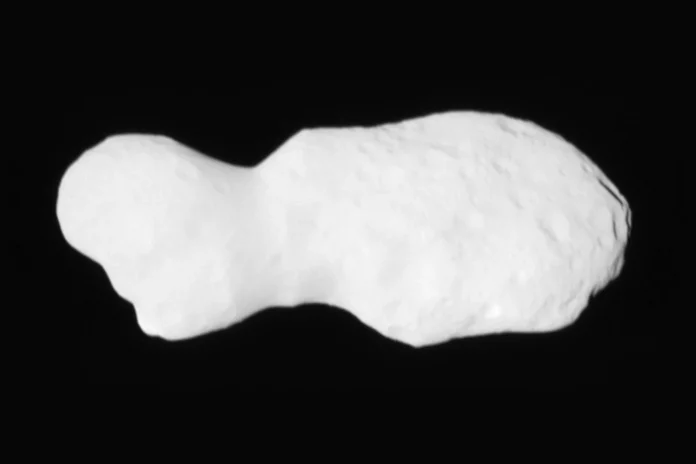Scientists from NASA‘s Lucy mission are finally completing the process of refining the data collected during the spacecraft’s April 20 encounter with Donald Johanson, an asteroid in the main asteroid belt of our solar system. And it is peanut-shaped as we first saw it.
Earlier this year, Lucy’s long-range reconnaissance camera snapped a picture of Donald Johansson as it flew rapidly past it at a distance of about 600 miles (960 kilometers), with the smallest visible features measuring about 130 feet (40 meters) across – an impressive close-up given the overall scale of everything we observe in space.
Unfortunately, the Sun’s position behind Lucy reduced the contrast of the asteroid’s fine details. But despite this, such a close visit is invaluable, as it allows scientists to carefully study the details of its surface with a brightness correction.
“Asteroid Donald Johanson has a surprisingly complex geology,” said Hal Levison, Lucy’s principal investigator, in a previous press release about the asteroid. Donald Johanson likely got its lumpy shape from the cosmic collision of two smaller objects about 150 million years ago. This is a relatively common shape among the smaller asteroids in the solar system, so what we learn about Donald Johanson could deepen our understanding of many other space objects.
“When we study the complex structures in detail, they will reveal important information about the building blocks and collision processes that formed the planets in our solar system,” Levison added in the same release.
Donald Johansson is not the main target of the Lucy mission, whose route is to the eight Trojan asteroids that share Jupiter’s orbit around the Sun. However, Lucy’s rendezvous with Donald Johansson and flyby of the asteroid Dinkinesh in November 2023 is a great “dress rehearsal” for Lucy as it continues its journey to the cooler outer regions of the solar system, as NASA’s Erin Morton noted in a statement earlier this week.
The next milestone for Lucy is set to occur in August 2027, when the spacecraft will finally begin to explore Jupiter’s Trojan asteroids in earnest – starting with Euribates, a carbonaceous asteroid so large it has its own moon, Ketu.









